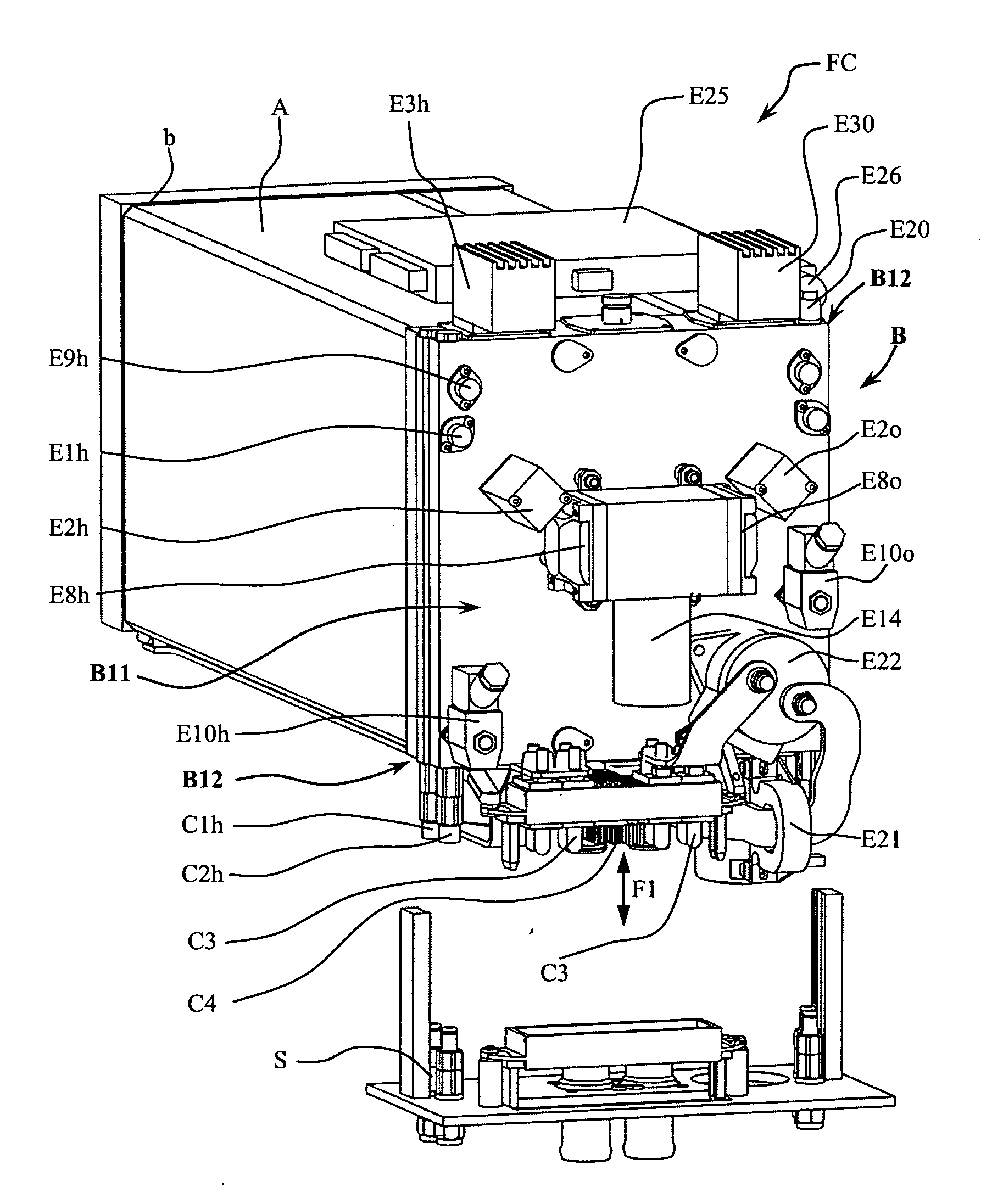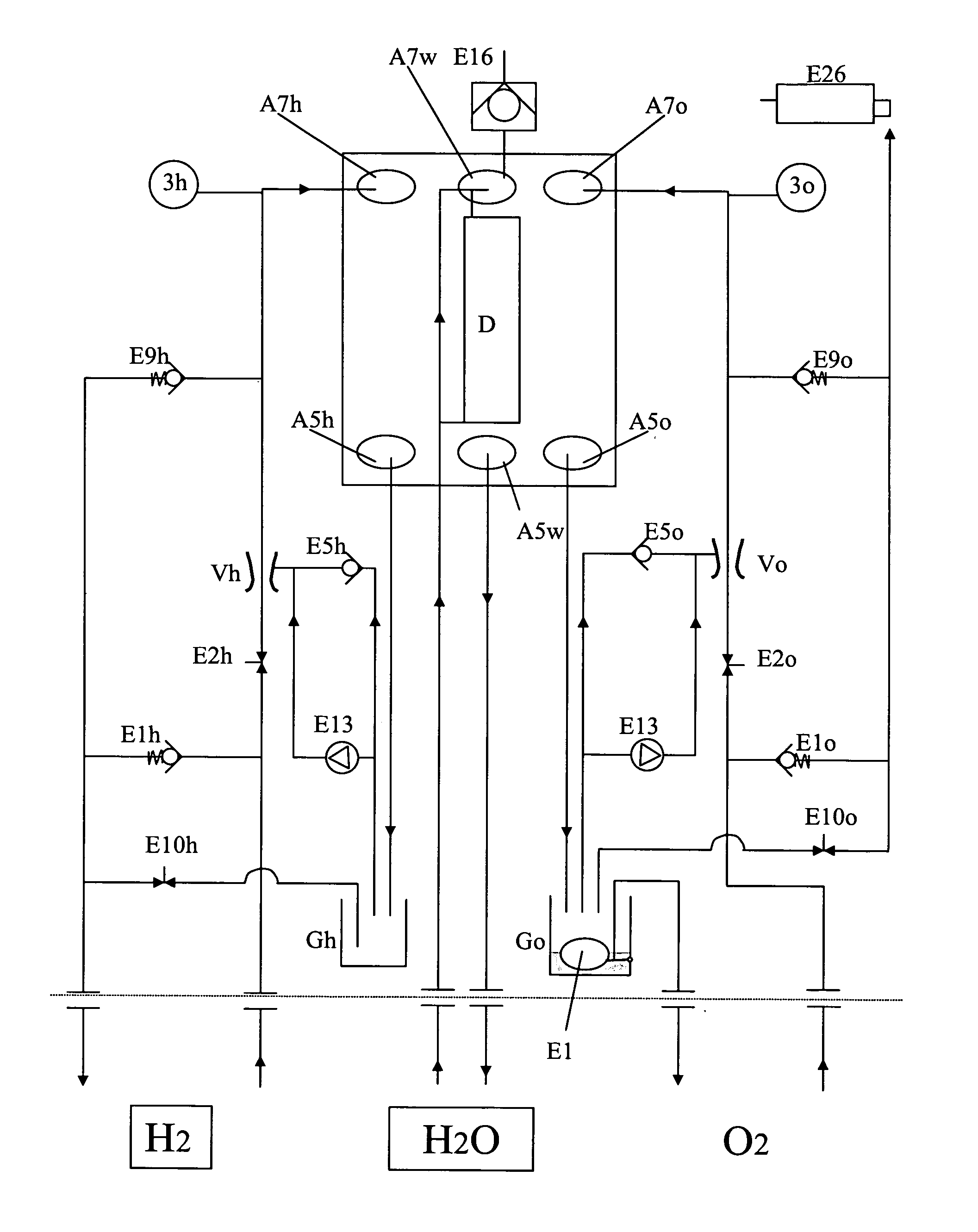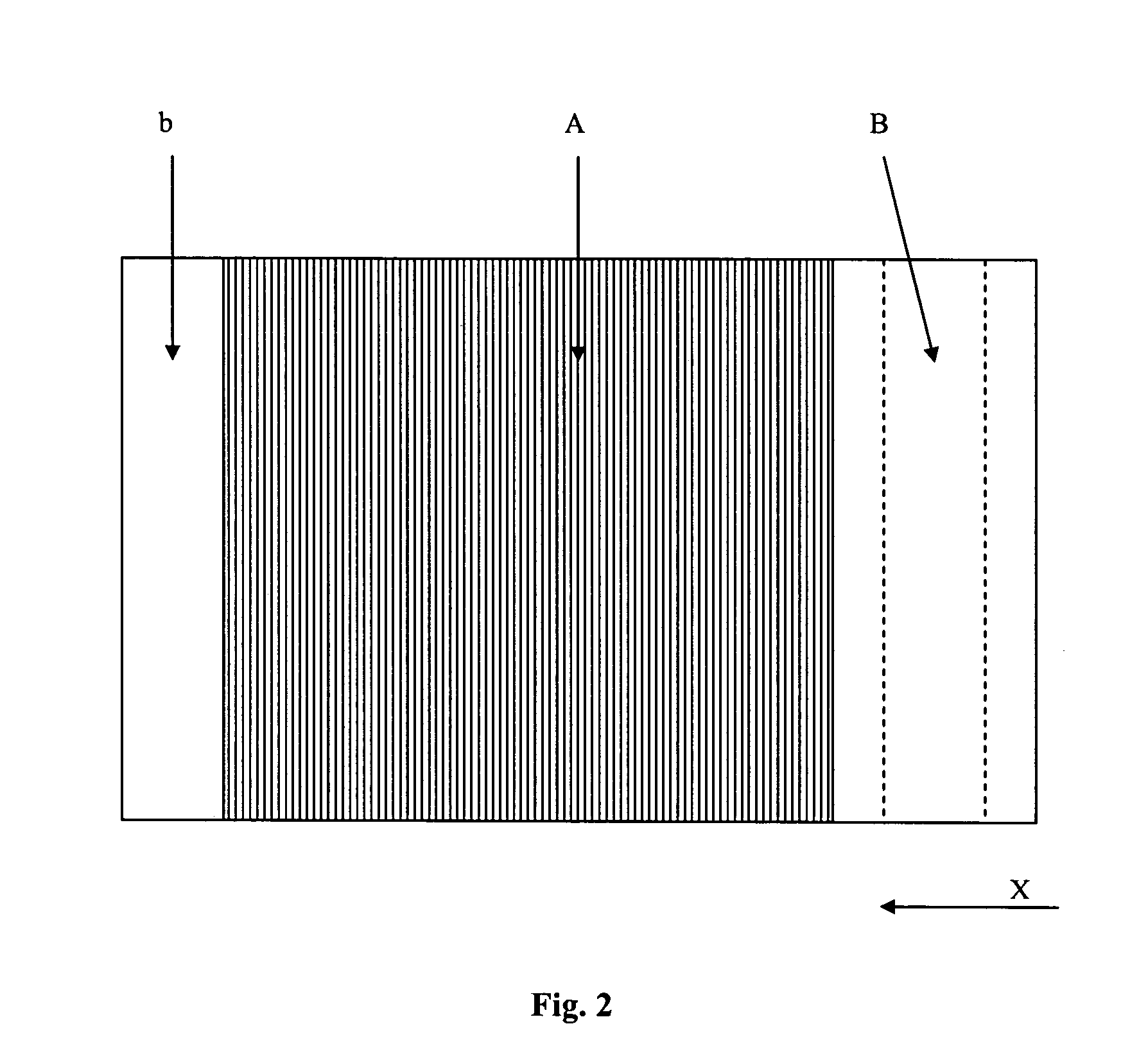Fuel Cell with Integrated Fluid Management
a fuel cell and fluid management technology, applied in the field of fuel cells, can solve the problems of large bulky gas management system, large bulky and a large amount of fuel cell in the stacking direction
- Summary
- Abstract
- Description
- Claims
- Application Information
AI Technical Summary
Benefits of technology
Problems solved by technology
Method used
Image
Examples
Embodiment Construction
[0038]Before beginning the detailed description, the reader's attention is drawn to a notation convention for the figure indexes. Indexes beginning with the letter “P” denote a perforation, a duct, a cylindrical bore, a hole or an orifice in an endplate. Consider the example of an orifice through which a fluid enters a fuel cell. This is denoted “P7” in a generic way, that is, regardless of the fluid concerned. The index ends with the letter “o” to indicate more specifically the gas, oxygen or air, the letter “h” to indicate more specifically hydrogen gas and the letter “w” to indicate more specifically the coolant. Indexes beginning with the letter “A” refer to the stack of individual cells forming the fuel cell (commonly referred to as “stack”). Indexes beginning with the letter “C” denote a connector, whether electrical or for gas or coolant. Indexes beginning with the letter “E” denote an element belonging to the management system for one of the fluids. If an index beginning wit...
PUM
| Property | Measurement | Unit |
|---|---|---|
| length | aaaaa | aaaaa |
| current | aaaaa | aaaaa |
| power densities | aaaaa | aaaaa |
Abstract
Description
Claims
Application Information
 Login to View More
Login to View More - R&D
- Intellectual Property
- Life Sciences
- Materials
- Tech Scout
- Unparalleled Data Quality
- Higher Quality Content
- 60% Fewer Hallucinations
Browse by: Latest US Patents, China's latest patents, Technical Efficacy Thesaurus, Application Domain, Technology Topic, Popular Technical Reports.
© 2025 PatSnap. All rights reserved.Legal|Privacy policy|Modern Slavery Act Transparency Statement|Sitemap|About US| Contact US: help@patsnap.com



